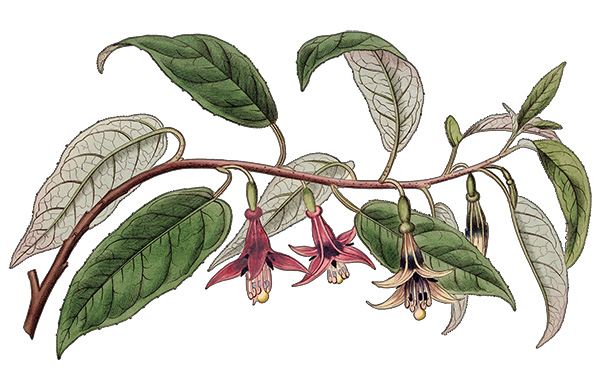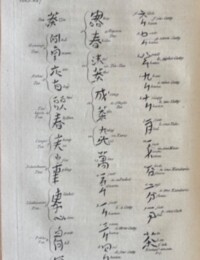Here is an Introduction
The collection of early books on New Zealand quickly becomes an intense study of the British colonisation of the country, because that is what the books are about. Narratives and accounts of early travellers and visitors, passers-by, missionaries, the first settlers and traders, explorers, Pacific rovers, and then into the 1830s and beyond, the accounts of those more permanently populating the new colony, their continuing engagement with Māori, the tensions around land purchase and the developing government, emigration schemes, and later in the century, those now resident and involved in governance and business. Māori never wrote their account in these early days and it resides in their oral history, and when in the printed word, through the European lens.
The books are mostly not spectacular, with only a couple being large illustrated productions. Many writers however, could sketch and paint and most of the books have illustrations and maps of some kind. However, there are few not worth reading, and some which are enthralling, not so much for accounts of exploration, after all, Māori were already there, but more for the depiction of life, characters and issues of the time. I have written an account of the major books of the 19 th Century, from 1807 to 1899 based on my own collection, with add-ins. The photos are rather amateurish and the text more about what interests me, with an attempt at being accurate and reasonably concise. There will be mistakes, omissions and sometimes a rather less than objective view of things. I have included mostly only substantial books, rarely pamphlets, speeches or other printed ephemera. More can be added, anything can be corrected or changed.
Here is an account of the main books from the years 1807 to 1829. The authors are Savage, Turnbull, Nicholas, Lee & Kendall, Cruise, Dillon and Ellis.
Here is an account of the main books from the years 1830 to 1839. The authors are d’Urville, Craik, Montgomery, Busby, Earle, Morrell, Yate, Marshall, Polack, Lang and Howitt.
Here is an account of the main books from the years 1840 to 1843. The authors include Petre, Bidwill, Dieffenbach, Heaphy, Jameson, Wade, Terry, Fox, and Maunsell, amongst others, this being the first period when the New Zealand Company, and its employees and associates, were active in publishing.
Here is an account of the main books from 1843 to 1849. The authors include, amongst others, the Wakefield, Marjoribanks, Brodie, George French Angas, Brees, Earp, McKillop, Power and Charles Hursthouse. This list includes some of the most important accounts of the New Zealand Company’s efforts at colonisation, and first-hand observations from visitors, settlers and traders, post Treaty, when the Colony was rapidly expanding, and relationships with Māori, land issues and the development of an administration were at the centre of attention.
Here is an account of the most important books from 1850 to 1855. They include books by Lucett, Shortland, Rough, Mundy, Adams, Swainson, Cholmondeley, Malone, Strachan, Tucker Grey and Taylor. During this period of active writing and publishing, the books are written particularly by those involved in Government (Swainson and Grey), and those with an ethnological and natural history interests (Shortland, Grey and Taylor). The first books on the new settlements in Canterbury are now appearing (Adams).
Here is a account of the most important books from 1856 to 1860. They include Fitton, D’Ewes, Paul, Puseley, Shaw, Marsden, Moon, Fuller, Thomson and Bennett. There is more on science, particularly on disease, a shipwreck, and amongst the great the good and the very earnest, a rogue or two.
Here are four books which provide accounts of the Taranaki war of 1860-1861. They are by Thomas Gilbert, Lt. Col Robert Carey, William Grayling and Edwin Hodder. The books provide different views, including those of Gilbert who might be New Zealand’s first conscientious objector, the military, a settler and a casual visitor. They are books about a period and events which still resonates today.
Here are four books published in or around 1863. There are two famous names. One is Frederick Maning, the controversial “Pakeha Maori” Irishman, who wrote of his time around the years of the signing of the Te Tiriti, including a history of the Northern War, and later became a Land Court Judge. The second, more internationally famous, is Samuel Butler, the novelist who spent 4-5 years in Canterbury in the early 1860s, before returning to England writing the dystopian fantasy Erewhon and later The Way of All Flesh. The other two books are insubstantial pieces by the visitors Benjamin Heywood and Thomas Moser. Neither are important but both have charm and interest, and are worth reading.
Here are books published between 1863 and 1873. They are quite varied, with Hochstetter leading on natural history, an account of 12 years in Canterbury, which isn’t that at all, an engaging narrative from a young aristocrat, Herbert Meade, and then two accounts from officers in the wars that took place in the 1860s across the North Island of New Zealand. One is pamphlet on self-justification from a very effective Lt. Col Thomas McDonnell, and the other is from Lt Col. John St John, which isn’t about the wars at all, but more of a late 1860s travelogue. But it does include a fine memoir from a Charles Marshall, living in the lower Waikato region at the time.
More articles
The greatest rivers often come from the least springs
21st Aug 2025 - Rare and Early Books
The 18th Century saw more than 30 voyages to China by the Swedish East India Company. On some of them,
Nehemiah Grew, establishing plant anatomy as the foundation of plant form and function.
8th Oct 2023 - Science and Thinking
Is plant anatomy and morphology taught these days? First year botany in the late 1960s had plant anatomy as the

